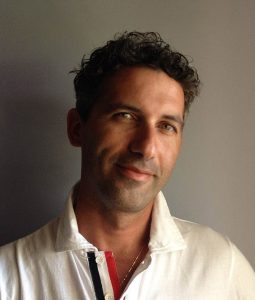I have been involved in the research on single-photon detection for about 20 years, starting from my master thesis when I had the opportunity to join Prof. S. Cova’s group. Since the beginning I had to manage my own research and during my PhD I supervised more than 10 master students, learning the issues related to the management of a group but also the beauty of teamwork and of being able to transfer my skills to others. My contributions to single-photon world are in the area of device, fast integrated electronics and final system developing. My vision for this emerging field is that a multidisciplinary approach that addresses all the aspects of the detection from the device physics to the final data acquisition could bring to the development of real groundbreaking detection systems in crucial fields like drug analysis, single molecule and protein analysis.
Main research lines:
My research activity has covered the broad area of “Single photon detection” and proceeds along three main lines: (i) pushing the frontiers of SPAD devices, increasing their sensitivity and their time resolution through comprehension of their physics; (ii) developing new ultrafast integrated electronics to drive SPADs, extract and convert the single-photon timing information from the analog current signal (iii) employing these advanced devices and electronics to reach previously unattainable results in field ranging from single molecule dynamics to quantum optics.
- High performance single photon avalanche diode: I gave an important contribution to the design and fabrication of various generations of SPADs sensors carried out in at Politecnico di Milano. Studies on the temperature dependence of the noise and on the combined effect of electric field and impurities led to develop a new method for the characterization of contaminant impurities in Silicon down to low levels previously not achieved. Final goal of my research was always the development of high performance detectors. In 2005 I obtained the unprecedented resolution of 35ps with large area single photon device. In the next years I devoted myself to the study of avalanche propagation oriented to the optimization of the timing performance on one side and to the origin of optical crosstalk in SPAD arrays on the other obtaining in 2008 a new model to fully explain it. Since 2007 I started to develop high performance arrays while in the last years I moved my attention to the detection efficiency improvement a key feature in biological applications. In 2008 I developed the first resonant cavity SPAD while in 2012 I contributed to the development of a new “red enhanced” technology with both high time resolution and high efficiency in the red region of the spectrum.
- Integrated electronics with extreme temporal resolution: During the last years I developed different generations of integrated Time to Amplitude Converter (TAC) with very high time resolution and linearity, reaching results never achieved worldwide before: these are ground breaking features in the field of integrated converters, both analog and digital. The really high time resolution (<8ps jitter, Full Width Half Maximum) the differential linearity (<4% LSB pp) together with 4 MHz conversion rate have been confirmed also in my first TAC array. The converter works alongside with the integrated Active Quenching Circuit (AQC) and Pick-up circuits I developed at the beginning of my work . These circuits allowed to reach great performance even with large area detectors. Recently I developed a novel pick-up integrated circuit that reaches resolutions down to 30ps even with custom technology based detectors arrays (electric field optimized for really low dark counts). This makes the electric cross-talk negligible in very high time resolution SPAD arrays detectors. Each of my circuit reached performance as high as the state of the art in their field and represents the foundations on which to develop high performance dense arrays, final goal of my current research.
- Biological application and quantum optics: Even starting from fully developed photon detectors and associated electronics, remarkable and challenging work is required for the design, implementation and characterization of the optoelectronic systems that make real the prospective application. Since the beginning of my activity I have devoted high attention and extensive work to this aim. During my PhD I developed a compact system for genetic analysis by electrophoretic separation of DNA fragments in glass chip achieving ultra-high (femtomolar) sensitivity. In 2002-2003, in the frame of a collaboration with Harvard University, Dep. Chemistry and Chemical Biology (Professor Sunney Xie) I developed an innovative detector module that was the key for carrying out in reality the experiment to reveal and track the configurational motion of a single-molecule of a protein; this led to a widely cited publication on Science. This module was the first prototype of the worldwide sold module by Micro Photon Device company. In 2005-2006 I demonstrated the effectiveness of my high resolution detectors in the QKD obtaining extremely good results rewarded by two highly cited works. In the recent years I focused my attention on sensors suitable for analytic systems based on fluorescence techniques. In 2008 I started a collaboration with Prof. S. Weiss at UCLA, Department of Chemistry and Biochemistry for the development of multi-spot FCS system for biological analysis (FCS) that showed the first promising results in 2010 and was founded by a NIH grant.

